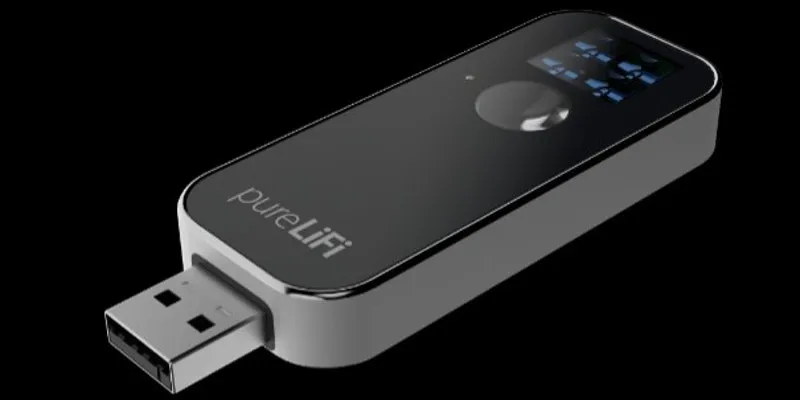

LiFi - Future of IoT & Automation? Is WiFi under threat?
An insight to communication technology based on LED, its application in IoT based automation and it's present market scenario.
What is Li-Fi?
Li-Fi (Light Fidelity) or LiFi is a wireless optical networking technology that uses light-emitting diodes (LEDs) for data transmission. The range of data transmission in Li-Fi is 100 times faster than Wi-Fi.
The technology was introduced by a German physicist Harald Hass in the TED(Technology, Entertainment, Design)Global talk on Visible Light Communication(VLC) on July 2011, by referring to it as “data through illumination”.
Source : TED
Developments
The emerging low cost technology has the potential to provide internet more securely at higher transmission speed than conventional Wi-Fi.
- In 2011, Dr. Hass of University of Edinburgh obtained data transmission speed up to 10Gbps without Line-Of-Sight (LOS) with inexpensive optical components such as off-the-shelf LEDs and photodetectors
- In 2015, researchers from University College London and University of Oxford published an article where they achieved transmissions at 112 Gbps and 224 Gbps for a full-angle Field-Of-View (FOV) of 60° and 36° respectively.
- In 2018, researchers from National Institute of Information and Communications Technology (NICT) and Waseda University demonstrated 400 Gbps multi-core fiber based optical wireless communication.
Li-Fi allows you to download 33 movies of 1.5GB just in one second.
Why Li-Fi?
LiFi is an optical technology which is mainly based on photodiodes. As photodiodes or LEDs consume very little energy, LiFi does not create electromagnetic interference the way WiFi does, which means that it provides faster transmission speeds, higher bandwidth, and the ability to work in spaces that are vulnerable to electromagnetic interference, such as airplanes, hospitals, or highly-sensitive industries such as the petroleum industry.
Li-Fi in IoT?
Growing demand for higher bandwidth, faster data streaming, enhanced security, less emission and low powered portable devices can extend the application of Li-Fi as data exchanging platform in the future.
Possibilities are quite exciting in smart connected cities. Street Lights integrated with Li-Fi modules can change the way people interact with outside world with on-the-go ready data access points. Data transmission in transportation infrastructure like traffic lights, and even enabling vehicle-to-vehicle communication with Li-Fi enabled headlights can also be a type of application.
Homes, corporate sectors and service sectors with Li-Fi implanted modules or chips in its lighting solutions can also enhance the rate of communication, thereby increasing the chances of creating awareness and pushing emergency alerts in case of any mishap or urgency.
Each technology has its strengths and its limitations. By working together, Li-Fi and Wi-Fi technologies will open doors for inter-connectivity and integration in more environments than Wi-Fi or Li-Fi alone.
With the help of Li-Fi, the issues around spectrum and bandwidth might help overcome as more and more connected devices transfer critical data that can enhance decision making. It will be exciting to see, how innovators, engineers and scientists and can innovate to improve people's lifestyle.
However, the road forward isn’t without pitfalls. What we have been talking about in smart systems is interoperability, and no matter how we connect—be it Li-Fi, Wi-Fi, cellular, or something else—we need to make sure our devices and systems can talk to each other.
Li-Fi in Market
The Li-Fi market has become highly competitive as it consists of several major players. These players include:
- General Electric (United States)
- Koninklijke Philips N.V. (the Netherlands)
- Oledcomm (France)
- pureLiFi Limited (United Kingdom)
- Panasonic Corporation (Japan)
- Acuity Brands, Inc. (United States)
- LightPointe Communications Inc. (United States)
- Velmenni (Tartu)
- LightBee Corporation (United States)
- FSONA Networks (United Kingdom)
Source: Lifi.co

The LiFi-XC is a certified plug and play LiFi system that works with USB devices and is small enough to be integrated into your next laptop, tablet or smart appliance.

MyLiFi® is a desk lamp with a pure and elegant design, providing white dynamic lighting, a secure, fast (23 Mb/s-) and radio waves free LiFi connectivity.
Li-Fi Products
Products that enable Li-Fi connectivity have already been released by various players. However, some products are still in development and are still not available for use in the open market.
PureLiFi
- OFE-Hero3
- ASIC Front and Rear
- pureLiFi XC
Oledcomm
- LiFiMax®
- MyLiFi® Bidirectional Desk Lamp
- MyLiFi® Pro Bidirectional Desk Lamp
- LiFiCare® LiFi Lamp for Hospitals
- GEOLiFi® LED Tube
- LiFiNET® or GEOLiFi® Street Lighting with RAGNI
- LiFiNET® or GEOLiFi® Street Lighting with TECHNILUM
VLNcomm
- LumiStick 2 USB Stick for LiFi Connectivity
- LumiLamp LiFi Enabled Desklamp
- LumiNex LiFi Enabled LED Panel
FireflyLiFi
- Office SecureLink
- M2M SecureLink
- Transit SecureLink
- Vehicle SecureLink
Source: Lifi.co






